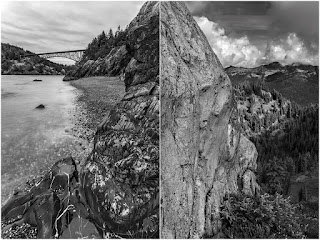"Theologians push the origins of the pursuit of silence far back in time. The doctrine of tsimtsum, developed by Isaac Luria, a sixteenth-century Jewish mystic, makes the pursuit of silence nothing less than the foundational act of the universe.
Luria began his own pursuit as a young man in a series of solitary retreats to islands in the Nile, where he gained renown for being able to interpret the language of birds, swishing palm-tree fronds, and burning embers. (Certain kabbalists thought that after the destruction of the temple, guardian angels used birds as a kind of remote storage for some of the deepest secrets of the Torah, hence their chirping was full of wisdom. Luria kept mum about what the leaves and coals had to say.) Eventually he moved to Safed in Palestine, and there developed the body of mystical thought for which he is most remembered. He himself wrote almost nothing, being constrained by the vastness of the truth he wished to articulate. “I can hardly open up my mouth to speak without feeling as though the sea burst its dams and overflowed,” he explained. Tsimtsum (roughly translated as “contraction”) is also premised on a problem of space. If God is everything—infinite and all-filling—how could there be any room for God’s creations? Thus, the first act in genesis had to be God’s withdrawal of Himself into Himself in order to make space for anything else. This withdrawal—a kind of inner retreat of the Divine—has been described both as a self-limiting and a self-silencing. (The Jewish identification of God with language makes any pullback on His part a retraction of the Divine tongue.) In Luria’s vision, God becomes the original monkish pursuer of silence, retreating into the dark, secluded depths of His nature so that creation would one day have the chance to sing in the light. Early commentators on Luria’s theories likened this process to a kind of cosmic inhalation: “How did He produce and create His world? Like a man who holds and restricts his breath, in order that the little may contain the many.” Each new expression of God’s creative force had to be preceded by another withdrawal, another self-emptying.
A humanistic reading of Luria’s myth might lead us to reflect that when we shut up and yank ourselves out of the picture, the world rushes vibrantly into the gap we leave behind—springing into fresh visibility and audibility. The eighteenth-century Hasidic master Nahman of Bratslav, however, invested the lesson of tsimtsum with a further mystical twist. Nahman argued that mankind had to reproduce the steps the Divine had gone through in His self-silencing so as to make contact with God’s essence. A process of emptying and quieting takes the pursuer deep into an inner void that opens onto the emptiness left behind by God. Yet once inside what Nahman described as the “mazes of silence,” the righteous one discovers that in some inexpressible fashion God exists within the void as well."







